
The Clean Water Act (CWA) is the primary federal law in the United States governing water pollution. Its objective is to restore and maintain the chemical, physical, and biological integrity of the nation's waters; recognizing the responsibilities of the states in addressing pollution and providing assistance to states to do so, including funding for publicly owned treatment works for the improvement of wastewater treatment; and maintaining the integrity of wetlands.

Land development is the alteration of landscape in any number of ways such as:

Ecosystem services are the various benefits that humans derive from healthy ecosystems. These ecosystems, when functioning well, offer such things as provision of food, natural pollination of crops, clean air and water, decomposition of wastes, or flood control. Ecosystem services are grouped into four broad categories of services. There are provisioning services, such as the production of food and water. Regulating services, such as the control of climate and disease. Supporting services, such as nutrient cycles and oxygen production. And finally there are cultural services, such as spiritual and recreational benefits. Evaluations of ecosystem services may include assigning an economic value to them.
Environmental mitigation refers to the process by which measures to avoid, minimise, or compensate for adverse impacts on the environment are applied. In the context of planning processes like Environmental Impact Assessments, this process is often guided by applying conceptual frameworks like the "mitigation hierarchy" or "mitigation sequence". This generally includes the steps avoid, reduce, restore, and offset. In some countries, environmental mitigation measures, including biodiversity offsetting, may be required by law.

A biodiversity action plan (BAP) is an internationally recognized program addressing threatened species and habitats and is designed to protect and restore biological systems. The original impetus for these plans derives from the 1992 Convention on Biological Diversity (CBD). As of 2009, 191 countries have ratified the CBD, but only a fraction of these have developed substantive BAP documents.
Ecosystem Marketplace, an initiative of Forest Trends, is a non-profit organization based in Washington, DC, that focuses on increasing transparency and providing information for ecosystem services and payment schemes.
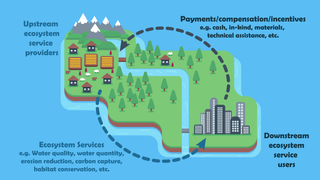
Payments for ecosystem services (PES), also known as payments for environmental services, are incentives offered to farmers or landowners in exchange for managing their land to provide some sort of ecological service. They have been defined as "a transparent system for the additional provision of environmental services through conditional payments to voluntary providers". These programmes promote the conservation of natural resources in the marketplace.
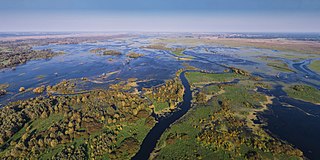
Wetland conservation is aimed at protecting and preserving areas of land including marshes, swamps, bogs, and fens that are covered by water seasonally or permanently due to a variety of threats from both natural and anthropogenic hazards. Some examples of these hazards include habitat loss, pollution, and invasive species. Wetland vary widely in their salinity levels, climate zones, and surrounding geography and play a crucial role in maintaining biodiversity, ecosystem services, and support human communities. Wetlands cover at least six percent of the Earth and have become a focal issue for conservation due to the ecosystem services they provide. More than three billion people, around half the world's population, obtain their basic water needs from inland freshwater wetlands. They provide essential habitats for fish and various wildlife species, playing a vital role in purifying polluted waters and mitigating the damaging effects of floods and storms. Furthermore, they offer a diverse range of recreational activities, including fishing, hunting, photography, and wildlife observation.
Biodiversity banking, also known as biodiversity trading, conservation banking, mitigation banking, habitat banking, compensatory habitat, or set-asides, describes a market-based framework for biodiversity offsetting where offsets can be traded in the form of credits to offset negative environmental impacts of development projects or activities. This involves biodiversity banks, areas with biodiversity value. On the site of a biodiversity bank, conservation activities may be carried out to preserve, restore, enhance, or conserve biodiversity. The outcomes of projects carried out at biodiversity banks are valued in the form of credits, which can be purchased as a way to offset unavoidable adverse environmental impacts, often with the aim of achieving no net loss of biodiversity.
Solid Waste Agency of Northern Cook County (SWANCC) v. U.S. Army Corps of Engineers, 531 U.S. 159 (2001), was a decision by the US Supreme Court that interpreted a provision of the Clean Water Act. Section 404 of the Act requires permits for the discharge of dredged or fill materials into "navigable waters," which is defined by the Act as "waters of the United States." That provision was the basis for the federal wetlands-permitting program.

Nutrient pollution, a form of water pollution, refers to contamination by excessive inputs of nutrients. It is a primary cause of eutrophication of surface waters, in which excess nutrients, usually nitrogen or phosphorus, stimulate algal growth. Sources of nutrient pollution include surface runoff from farm fields and pastures, discharges from septic tanks and feedlots, and emissions from combustion. Raw sewage is a large contributor to cultural eutrophication since sewage is high in nutrients. Releasing raw sewage into a large water body is referred to as sewage dumping, and still occurs all over the world. Excess reactive nitrogen compounds in the environment are associated with many large-scale environmental concerns. These include eutrophication of surface waters, harmful algal blooms, hypoxia, acid rain, nitrogen saturation in forests, and climate change.

"No net loss" is the United States government's overall policy goal regarding wetlands preservation. The goal of the policy is to balance wetland loss due to economic development with wetlands reclamation, mitigation, and restorations efforts, so that the total acreage of wetlands in the country does not decrease, but remains constant or increases.
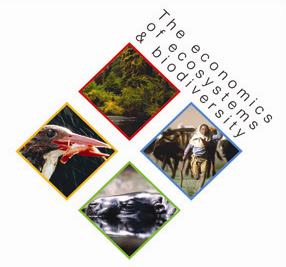
The Economics of Ecosystems and Biodiversity (TEEB) was a study led by Pavan Sukhdev from 2007 to 2011. It is an international initiative to draw attention to the global economic benefits of biodiversity. Its objective is to highlight the growing cost of biodiversity loss and ecosystem degradation and to draw together expertise from the fields of science, economics and policy to enable practical actions. TEEB aims to assess, communicate and mainstream the urgency of actions through its five deliverables—D0: science and economic foundations, policy costs and costs of inaction, D1: policy opportunities for national and international policy-makers, D2: decision support for local administrators, D3: business risks, opportunities and metrics and D4: citizen and consumer ownership.
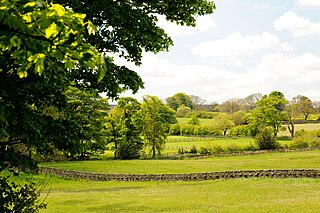
Biodiversity offsetting is a system used predominantly by planning authorities and developers to fully compensate for biodiversity impacts associated with economic development, through the planning process. In some circumstances, biodiversity offsets are designed to result in an overall biodiversity gain. Offsetting is generally considered the final stage in a mitigation hierarchy, whereby predicted biodiversity impacts must first be avoided, minimised and reversed by developers, before any remaining impacts are offset. The mitigation hierarchy serves to meet the environmental policy principle of "No Net Loss" of biodiversity alongside development.
The Lacassane Company is a land management company, with a goal of sustainable land management using an environmental management scheme that involves a host of tools including holistic management. Located primarily in Jefferson Davis and Cameron parish, with property in Ragley, Louisiana, the company headquarters is in Lake Charles, Louisiana.

The Clean Water Rule is a 2015 regulation published by the U.S. Environmental Protection Agency (EPA) and the United States Army Corps of Engineers (USACE) to clarify water resource management in the United States under a provision of the Clean Water Act of 1972. The regulation defined the scope of federal water protection in a more consistent manner, particularly over streams and wetlands which have a significant hydrological and ecological connection to traditional navigable waters, interstate waters, and territorial seas. It is also referred to as the Waters of the United States (WOTUS) rule, which defines all bodies of water that fall under U.S. federal jurisdiction. The rule was published in response to concerns about lack of clarity over the act's scope from legislators at multiple levels, industry members, researchers and other science professionals, activists, and citizens.

Conservation banking is an environmental market-based method designed to offset adverse effects, generally, to species of concern, are threatened, or endangered and protected under the United States Endangered Species Act (ESA) through the creation of conservation banks. Conservation banking can be viewed as a method of mitigation that allows permitting agencies to target various natural resources typically of value or concern, and it is generally contemplated as a protection technique to be implemented before the valued resource or species will need to be mitigated. The ESA prohibits the "taking" of fish and wildlife species which are officially listed as endangered or threatened in their populations. However, under section 7(a)(2) for Federal Agencies, and under section 10(a) for private parties, a take may be permissible for unavoidable impacts if there are conservation mitigation measures for the affected species or habitat. Purchasing “credits” through a conservation bank is one such mitigation measure to remedy the loss.
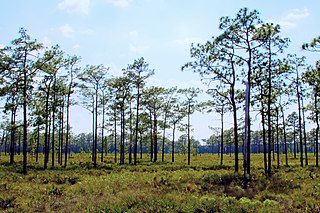
The Disney Wilderness Preserve is a 11,500-acre nature reserve near Kissimmee, Florida. It was created through an agreement between The Walt Disney Company, The Nature Conservancy, and the state of Florida. It is located fifteen miles south of Walt Disney World.
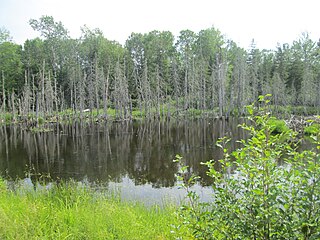
Canadian wetlands account for approximately one quarter of the world's total wetlands and is ranked with the highest surface area of wetlands on the Ramsar Conventions List of Wetlands of International Importance. Canada holds 37 designated areas of International Importance which equates to approximately 13,086,767 hectares of land.
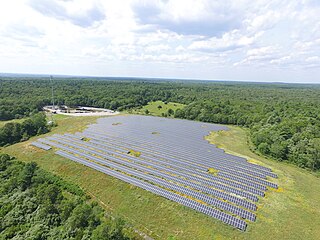
A solar landfill, also referred to as a brightfield, is a former landfill site that has been transformed into a solar array or solar farm. Landfills that are no longer in use are often called brownfields due to potential environmental concerns. By repurposing these brownfields into solar fields, they then become brightfields. In the United States, there are more than 10,000 closed or inactive landfills. These have the potential to accommodate over 60 gigawatts of solar installations.















